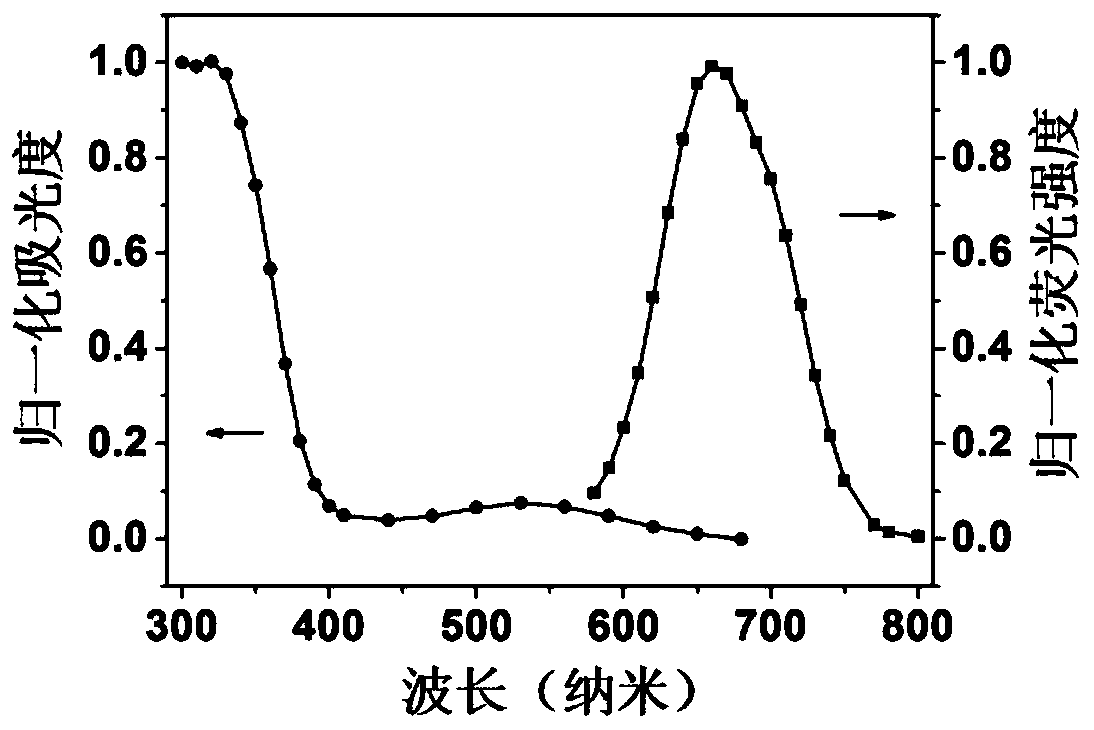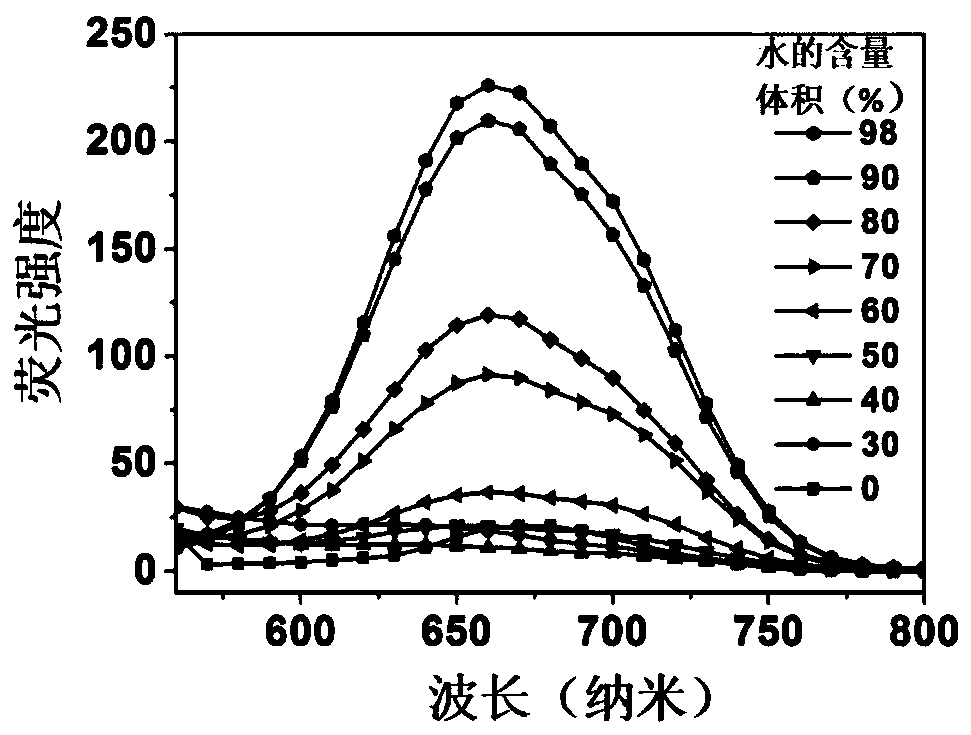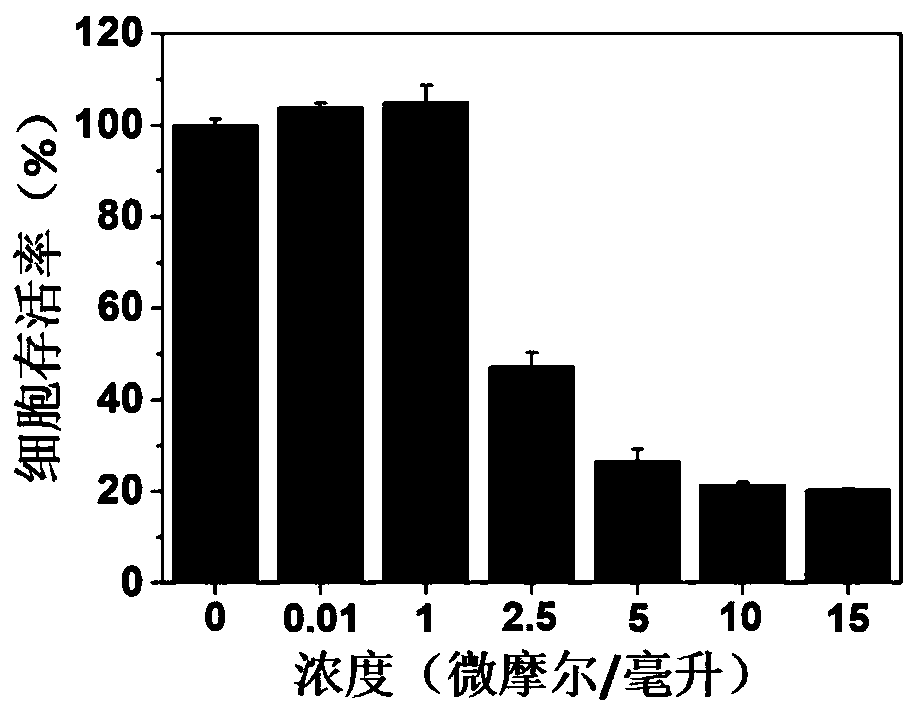A low-power white light-driven photosensitizer for mitochondrial-targeted fluorescent probes and its synthesis method and application
A technology of fluorescent probe and synthesis method, applied in the field of preparation of fluorescent probe
- Summary
- Abstract
- Description
- Claims
- Application Information
AI Technical Summary
Problems solved by technology
Method used
Image
Examples
Embodiment
[0039] A low-power white light-driven mitochondrial targeting fluorescent probe, the compound name is (((((2,5-bis((Z)-2-(3,5-bis(trifluoromethyl)phenyl)- 2-cyanovinyl)-1,4-phenylene)bis(anilino))bis(4,1-phenylene))bis(oxy))bis(butane-4,1-diyl )) bis(triphenylphosphine) bromide (abbreviated as AIE-FR-TPP), which emits red fluorescence under the irradiation of an ultraviolet lamp with a wavelength of 488nm, and the molecular structural formula of the compound AIE-FR-TPP is:
[0040]
[0041] Its preparation method, the steps are as follows:
[0042] 1) Compound 1 (0.097g, 0.1mmol), potassium carbonate (0.021g, 0.15mmol), 1,4-dibromobutane (0.432g, 2.0mmol) and 1mL of anhydrous acetone were uniformly mixed to obtain a mixed solution;
[0043] 2) Add the mixed solution into a 10mL round bottom flask, and heat the mixed solution to reflux for 48 hours;
[0044] 3) After the reaction finishes, unreacted potassium carbonate is removed by filtration to obtain the filtrate, then co...
PUM
 Login to View More
Login to View More Abstract
Description
Claims
Application Information
 Login to View More
Login to View More - R&D
- Intellectual Property
- Life Sciences
- Materials
- Tech Scout
- Unparalleled Data Quality
- Higher Quality Content
- 60% Fewer Hallucinations
Browse by: Latest US Patents, China's latest patents, Technical Efficacy Thesaurus, Application Domain, Technology Topic, Popular Technical Reports.
© 2025 PatSnap. All rights reserved.Legal|Privacy policy|Modern Slavery Act Transparency Statement|Sitemap|About US| Contact US: help@patsnap.com



